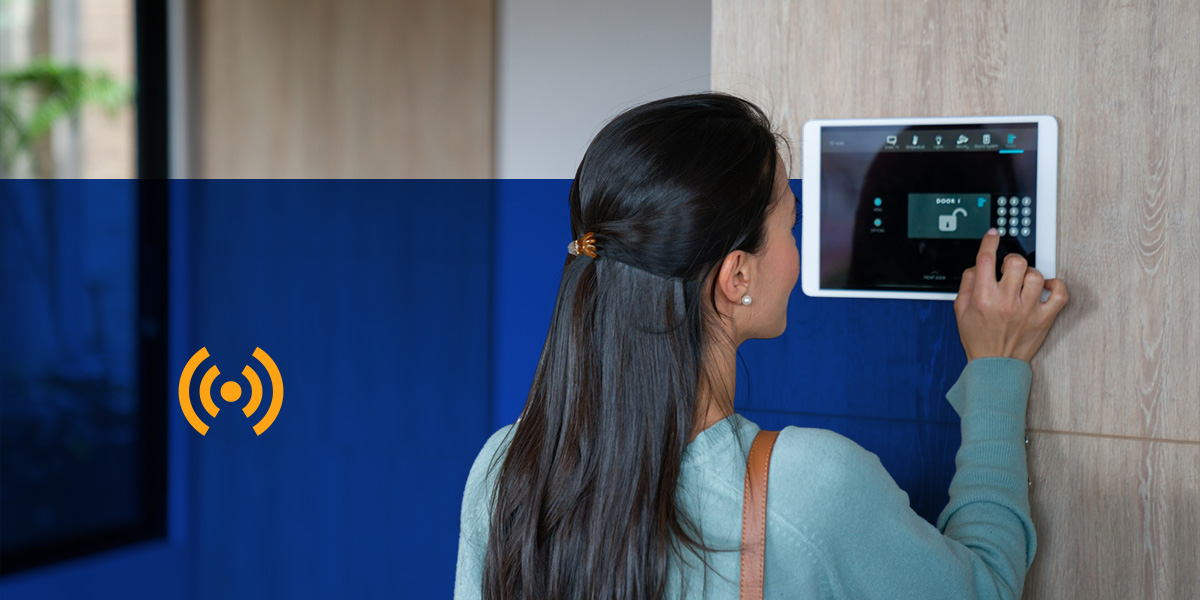Nov 2024
Do You Need Internet for Your Alarm System?
Not all alarm systems require internet access for operation. Some alarm systems run on traditional phone lines or cellular signals, while others require an internet connection through an Ethernet cable, Wi-Fi signal or voice over Internet Protocol (VoIP). There are also home alarm systems that use numerous modes of connection for redundancy.
View Our Alarm System Services
How Alarm Systems Communicate
Your alarm system determines when to send an alert by accepting information from the surveillance tools installed around the property. When the surveillance tools register a threat, they deliver that information to the alarm system’s control console. The control console sounds the alarm and relays an alert to your security monitoring service, your monitoring software or both.
Alarm communication can occur with or without wires. A wired alarm system uses different types of cables to connect with devices and monitoring centers. A wireless house alarm system relies on Wi-Fi or radio signals. Internet-based options are available for both types.
Do I Need Internet for a Security System?
Ultimately, you do not always need the Internet for a security alarm system. There are ways to connect alarms, surveillance equipment and monitoring centers with and without the internet. The need for internet access depends on the type of security alarm system you choose, but there are a few benefits of using an internet-based alarm system, such as:
- Affordability: Internet-connected alarm systems are an affordable option because you only need to pay your internet provider and monitoring service. They eliminate reliance on traditional landline companies.
- Versatility: The internet provides remote monitoring functionality and facilitates connection with smart security devices that you can use to control and automate the system.
- Ease of installation: Setting up a Wi-Fi alarm system is easy because there are fewer cables to connect and conceal. You’ll have greater placement flexibility, too.
- Scalability: A Wi-Fi alarm system can more easily accept additional devices than wired systems with limited inputs.
Connecting to Surveillance Equipment
All alarm systems use some combination of wired and wireless systems to transmit information from surveillance devices to the control console. The options for connecting surveillance equipment to the console include:
- Wi-Fi signals
- Radio signals
- Power over Ethernet (PoE)
- HDMI cables
- RCA cables
- S-video cables
- USB cables
- Bayonet Neill-Concelman (BNC) connectors
- Fiber-optic cables
- Coaxial cables
Connecting to Monitoring Services or Applications
There are several ways alarm systems can communicate with monitoring centers, including:
- Telephone landline: Some connect to a telephone line to communicate with a monitoring center.
- Internet: A security system can use VoIP to transmit data to remote monitoring centers, an Ethernet cable to reach a home computer or a Wi-Fi signal to reach a smartphone application.
- Cellular data: Cellular alarm systems send signals to cell phone towers using whichever data option is available in your area, often LTE, 4G or 5G.
- Dual system: A dual system uses two wired or wireless connection types so that it can continue transmitting data in case one is disrupted.
Choose Silent Guardian to Monitor Your Property Today
At Silent Guardians Technical Solutions, we offer various types of home security systems. Our staff can help you determine the ideal connection type for your home monitoring equipment. We encourage you to browse our home alarm technology for an overview of the options available to you. Then, contact us online to schedule a free estimate!

